Three Places in Landscapes That Are Ideal for Waterwise Plants
Let’s say you (or your HOA) wants to find ways to be more water-wise, so you can reduce your water bill, keep your curb appeal up and make a positive environmental impact. (Awesome!)
You’re beginning to explore removing parts of your “non-essential” traditional lawns—those areas that aren’t actively used for recreation or gathering—and perhaps some of your higher water plantings. You’re thinking about replacing them with water-wise plants.
The question is…
Are certain areas of your landscape better to focus on than others? Where are some of the best places in your landscape to start?
Here are three places where you can make an impact quickly.
1) Lawn medians
Does your HOA have medians covered in lawn grass? They may be in roads or community parking lots.
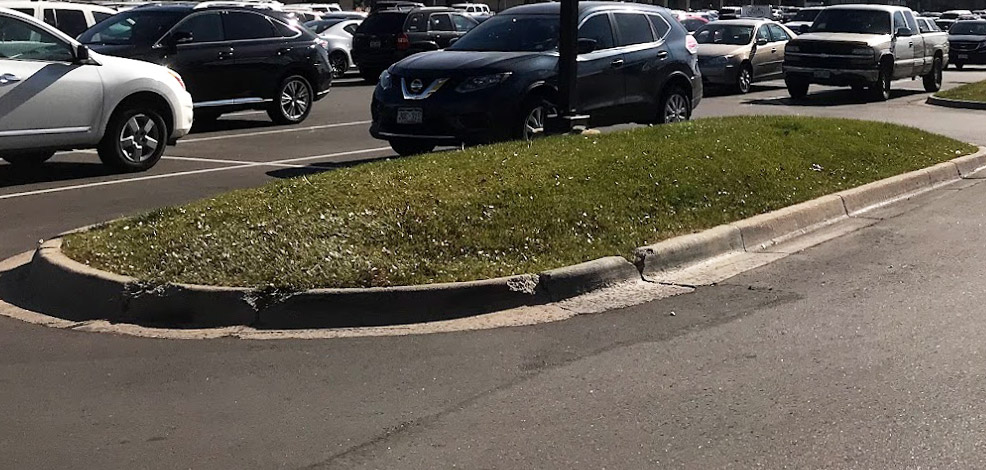
Lawn medians can be difficult to water efficiently with pop-up sprayers. Plus, they tend to be natural heat islands, so they’re a great area to convert into water-wise plants (such as low water, heat tolerant shrubs, perennials or ornamental grasses).
There are tough, yet attractive plants that need minimal water after their roots become established in the ground.
In other words, with the right plants, you could dramatically cut the watering schedule for these medians by half, two-thirds, or even more after the plants’ first growing season.
2) Weird, awkward lawn areas
If you have lawn areas in your landscape that have tight angles, are very narrow (less than eight feet wide) or have obstacles that can’t be mowed around easily with a riding lawnmower, these are ideal spots for water-wise perennials and groundcovers, instead of traditional lawns.
We’ve shared examples of weird, awkward turf areas below. Once you start noticing these types of spots, you won’t be able to “un-see” them!
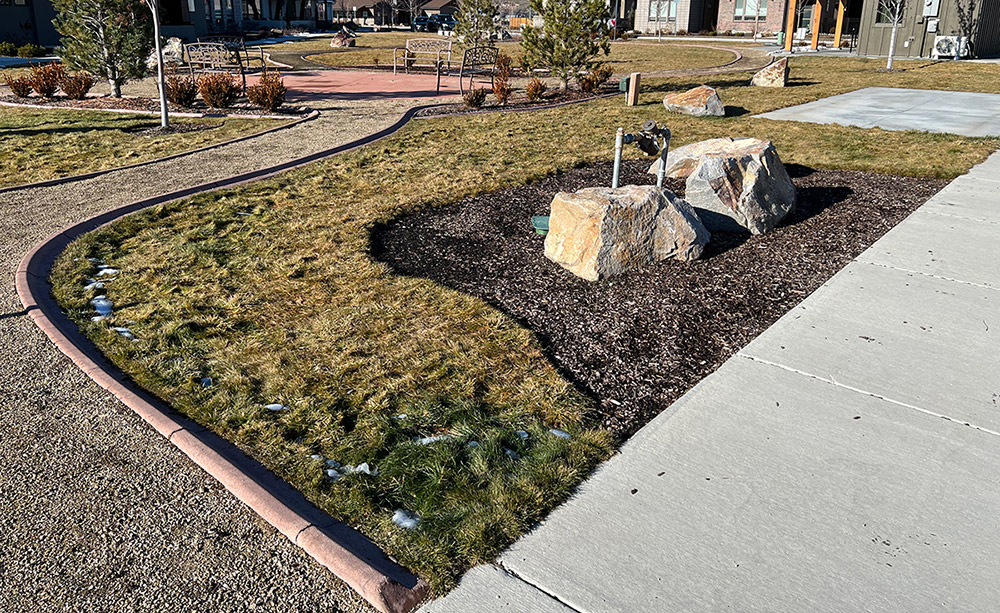

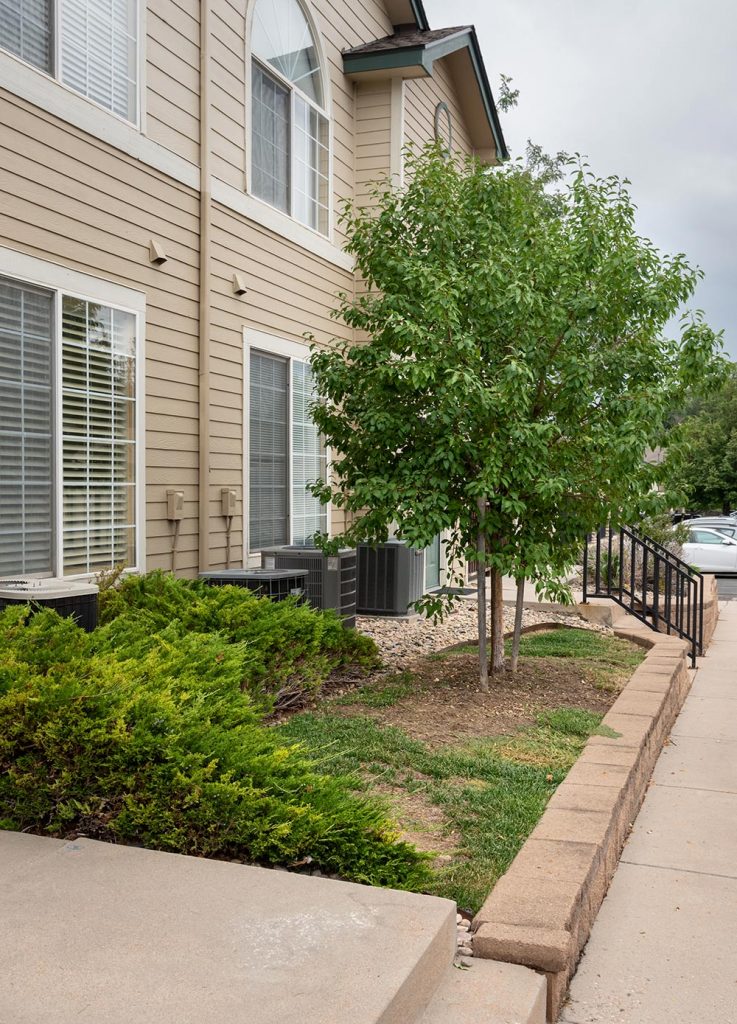

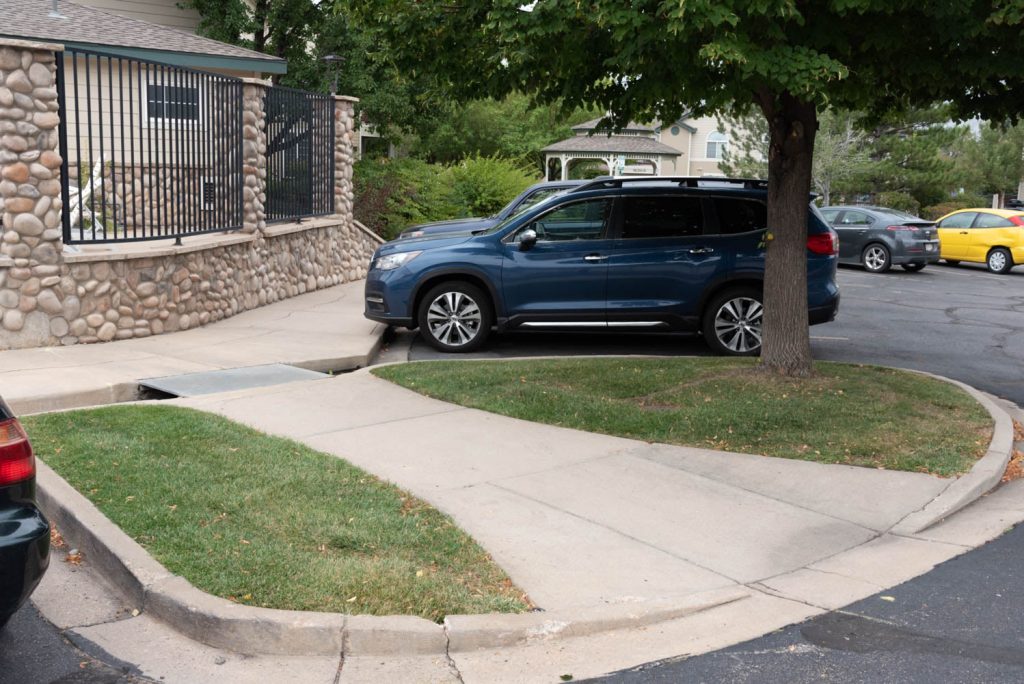
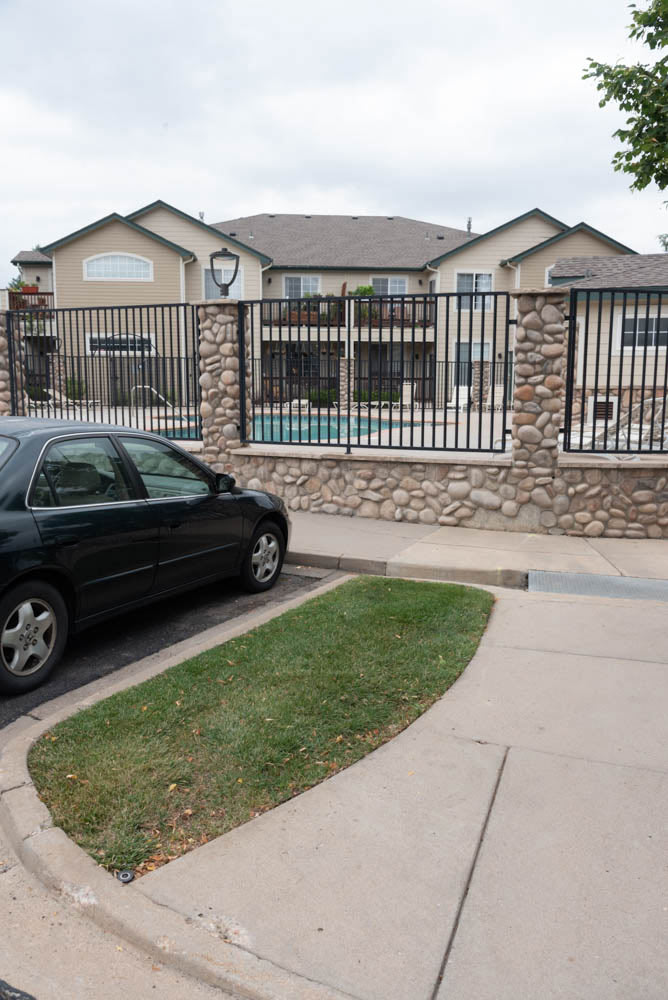
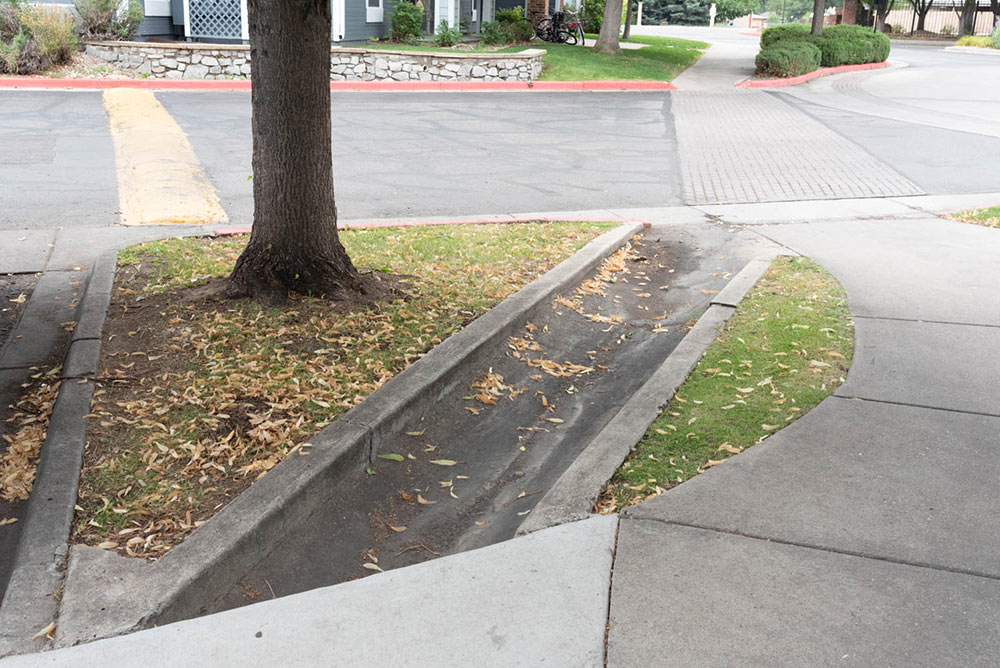
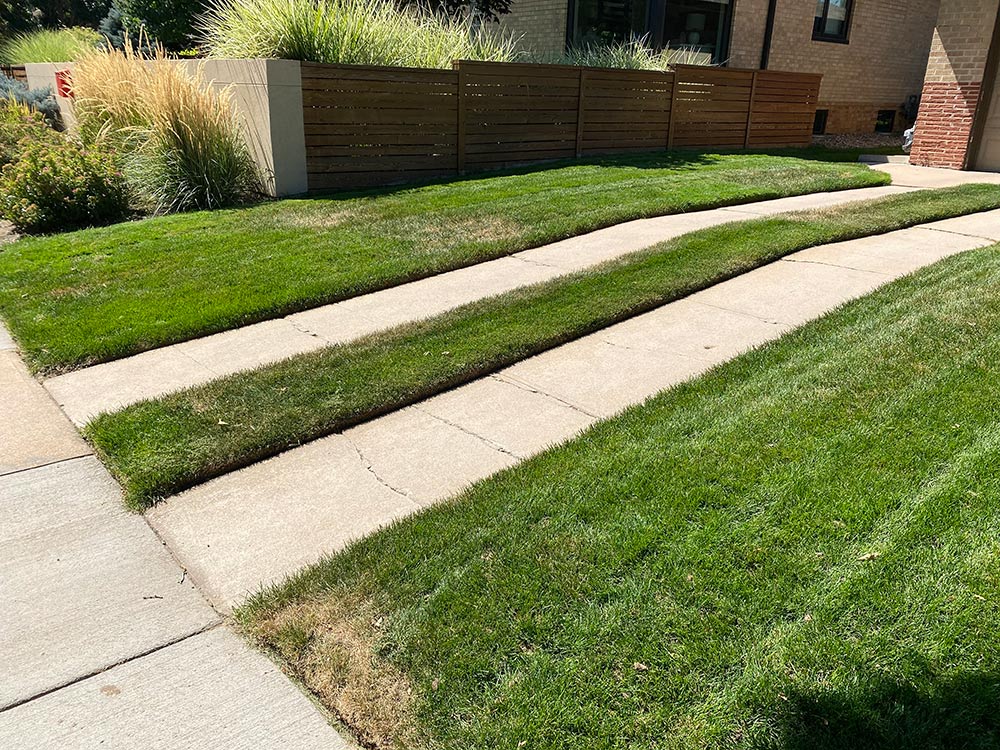

Our friends with Localscapes in Utah have a helpful guideline. If a lawn strip is less than eight feet wide, it typically isn’t ideal for traditional lawn grass because it can be inefficient to water.
Often times, these areas can be a better fit for waterwise plants or other uses.
On a related note…. it’s common for developers to plant narrow strips of lawn that become default pathways, such as between buildings, near utility boxes or in the spaces connecting front to back yards.
Instead, consider turning these narrow strips of lawn into actual pathways made of hardscape materials, complemented by water-wise plants and groundcovers.
3) Park strips / sidewalk strips
These are the narrow islands of lawn between the sidewalk and the street.
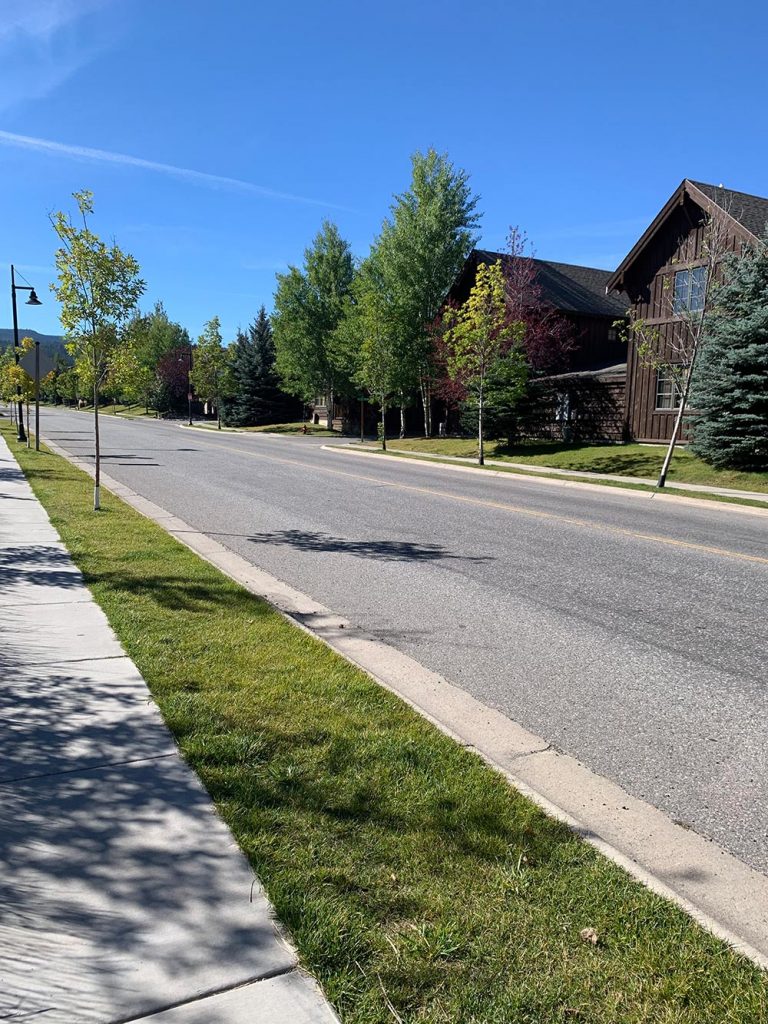
These lawn strips:
— Tend to be difficult to water efficiently. Often times, you’ll see people watering across sidewalks to reach them or over-spraying water into the street.
— Can be tricky to keep looking good, particularly in the heat of the summer.
— Have more limited functionality because they’re narrow.
— Can be a good starting point for transformation in individual homeowners’ yards. Homeowners often aren’t as attached to these lawn strips as other parts of their lawn, like their backyards. When was the last time you heard someone ask their kids, “Hey, why don’t you go play next to the street?”
Similar to medians, these strips can be ideal for beautiful, waterwise plantings (such as shrubs, perennials or groundcovers that tolerate heat well and don’t need much water, if any).
In this case, it’s often best to focus on shorter plants, so you don’t block sight lines from the road. Check with your city to see whether they have any maximum height requirements for plants—for example, plants must be 18” or less in height.
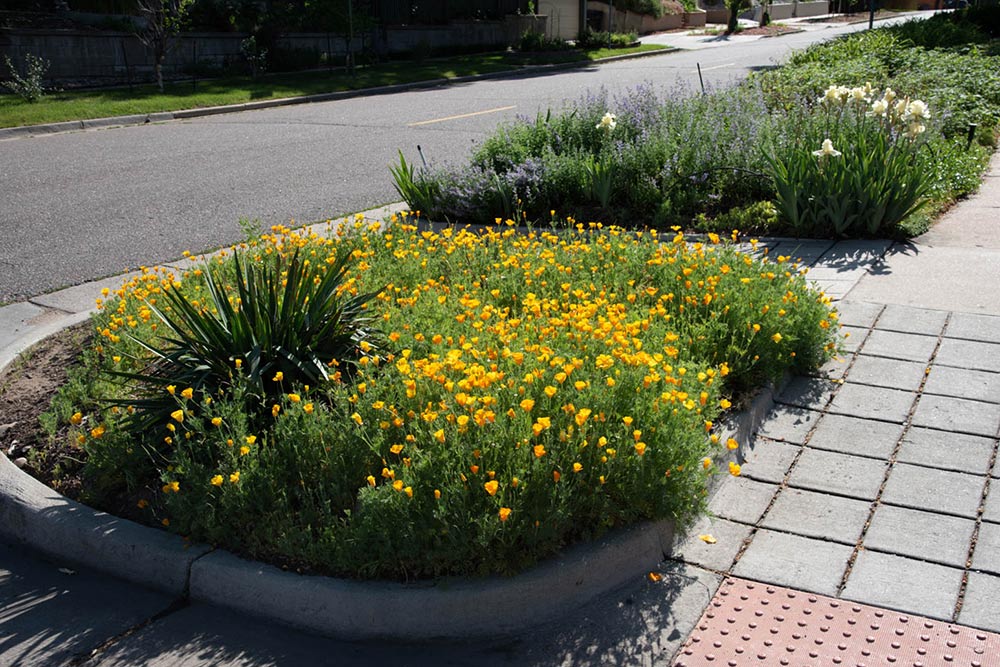
If these strips include existing trees, you’re going to want to approach these areas with more thought and planning due to the water needs of the trees.
This is where a good, water-wise landscape designer can help.
Or, depending on where you live, you may be able to find programs to guide you. For example, Utah has a program for individual homeowners called Flip Your Strip.
Explore more water-wise articles >>
And share this article with your HOA!

